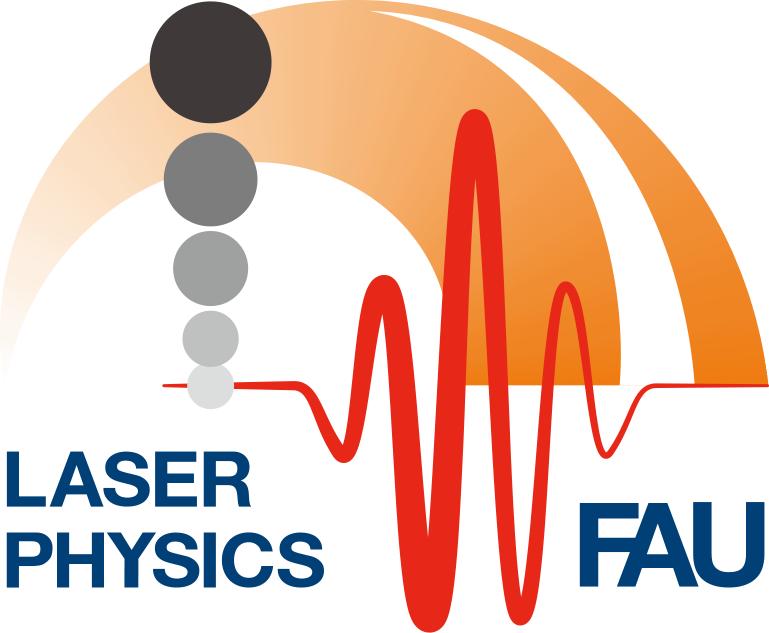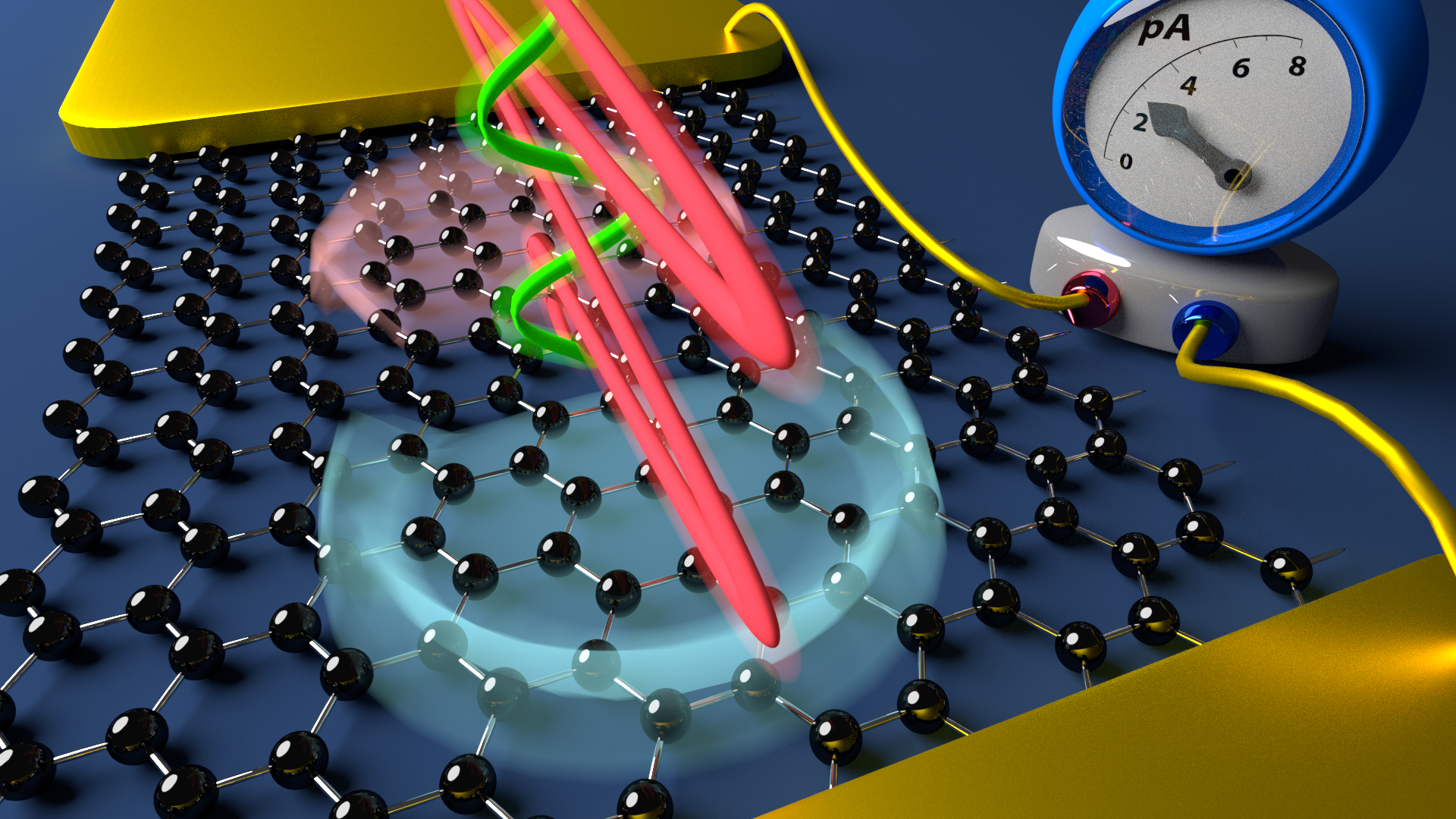Extremely fast control over electrons in graphene – published in Phys. Rev. Lett.
How fast can electrons be controlled in a conductive material? This is a fundamental question that could boost up the speed of modern electronics. It determines how fast data and signals and thus information can be transmitted. In our article, which recently appeared in Physical Review Letters, we get to the bottom of this question. Together with the group of Prof. Heiko Weber, we experimentally show that it is possible to control electrons with laser fields within the atomically thin semi-metal graphene. For this we use ultrashort laser pulses, which enable us to obtain a temporal resolution of less than one femtosecond (1 femtosecond is 10 to the power of -15 seconds, i.e. one quadrillionth of a second). This shows that currents can be switched 1000 times faster than, for example, it is possible in modern transistors. In the future, this could make it possible to produce components that operate at clock frequencies in the petahertz range, which corresponds to 1 million gigahertz.
Extreme interaction between light and matter
When a photon is absorbed by a material, an electron can be excited from the valence- to the conduction band. As a rule, this light-matter interaction can be treated perturbatively. This means that the momentum transfer from the photon to the electron can be neglected. However, this approximation is no longer valid if short and intensive laser fields are applied. In this case the electrons behave like a quantum mechanical wave, which is driven by the laser field through the material. In a previous publication, we have already shown that this electron wave can pass through different quantum paths in the material and interfere with itself. Depending on whether the interference is constructive or destructive, the current direction is determined.
When a second laser pulse polarized perpendicular to the first pulse is sent to this electron wave, the quantum paths can be controlled in two dimensions (see figure). Depending on the exact shape of the two laser waves and the time delay between them, it is possible to switch the quantum path interference on and off and thus control the current direction. What is remarkable is that in this process the coherence of the electrons is preserved, i.e. the electron retains its wave characteristics during the light-matter interaction, even at room temperature.
Our results are interesting both for basic research and for future applications, as they make it possible to investigate processes that take place on an extremely short time scale. This includes, for example, the question of how long it takes for an electron to sense the presence of other electrons. One application, as discussed above, could be electronics, as it will be possible to control currents with a frequency of petahertz, which could be used in future electronics.
Our contribution has just been published in PRL and has been highlighted by the editors. Therefore, PRL has also written a summary, which can be found here. Our FAU press release can be found here.

